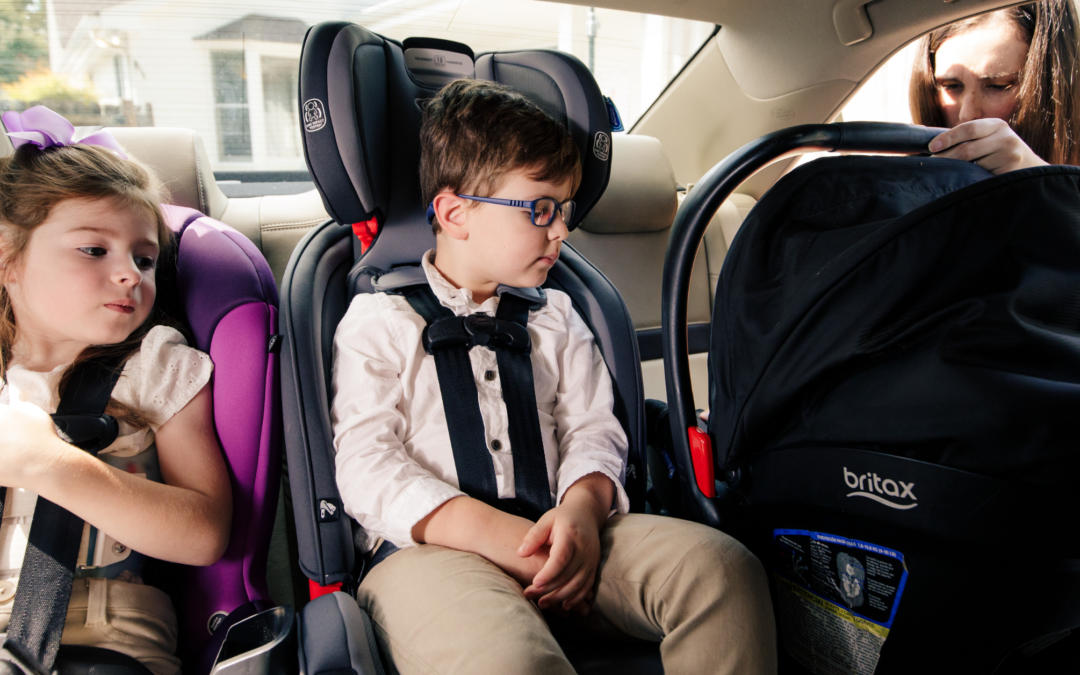Over the years, the standards for safety have changed. This isn’t because what was safe ten years ago was once safe but it isn’t now. Instead, the standards change because more data is collected, research improves, and new technology allows us to make processes safer!
This is why baby products look a lot different now than they did even twenty years ago. Everything from high chairs to swings to cribs to car seats have changed dramatically. But, I am sure we’ve all heard the phrase, “When I was a kid, I didn’t use any of that and turned out just fine.” [Insert eye roll here.]
This, friends, is survivor’s bias, and it’s a super dangerous attitude to have toward safety. We’ve dedicated our post today to exploring survival bias:
What is Survival Bias?
Survival Bias Definition:
What is the exact definition of survival bias? As Nassim Taleb put it, “In a nutshell, the survivorship bias implies that the highest performing realization will be the most visible. Why? Because the losers do not show up…” This means even though there may be a variety of outcomes to an event or situation, we tend to only focus on the best-case scenario.
More technically, survivor bias is a type of cognitive bias where a person focuses on a group that passed a selection process and ignores those who did not. People with this bias are overly optimistic about a potential outcome, which can put them or others in danger of failure or injury. This bias motivates people to make poor decisions based on warped or incomplete data.
Survivorship Bias Examples:
Alright, maybe all that was still a little too complicated. But, give us one more chance to explain it clearly using these great examples! Some you’ve probably heard before.
World War II Planes
In this famous case, a statistician named Abraham Wald was asked to help with a plan to protect fighter planes. He was given data that showed the most common location of bullet holes on returning planes. The problem was, the data set was flawed!
To figure out what shots were the most damaging, you need the data of the planes that did not make it. Not those that did! The selection process to accumulate the data didn’t include the planes that no longer existed, the planes that took devastating damage. Therefore, Abraham Wald actually recommended they reinforce the areas that featured no bullet holes on the surviving planes. In this example, the military leaders requesting Abraham Wald’s help were experiencing survivor bias.
Entrepreneurship
Another version of survivor bias we often experience is with stories of successful individuals. We hear about musicians, tech giants, actors, business leaders, and more who maybe dropped out of school, couldn’t hold down a job, or broke every rule along the way. We feel inspired by these stories when their success feels suddenly possible because of their humble upbringings!
Unfortunately, this cognitive shortcut doesn’t take into account all the stories of failure. And, the truth is, there are a LOT more individuals that failed than succeeded under those same circumstances. So, instead of feeling invincible like Bill Gates or Jeff Bezos, we should study up, work hard, and take the support we can get, despite the outlying success of those that did it differently.
Healthy Living
Healthy living is another area where people have a lot of survivor bias. They hear about a woman that lived to 120 smoking a pack of cigarettes every day and think the risks of smoking must be overblown. Or, since they eat food that’s been left out for hours and it’s never gotten them sick before, it won’t ever get them sick in the future.
But, the truth is more people die or get sick from living unhealthy lifestyles than survive through it. The few incredible success stories shouldn’t inspire you to continue avoiding doctors, disregarding health advice, and eating unhealthy foods. You’re more likely to encounter failure than success with this method!
Car Safety
But, why are we talking about survivor bias on this blog? Well, because one of the most regrettable examples of survivor bias includes car safety! It’s no secret that back in the day, vehicles weren’t as safe, especially when it comes to child restraint systems.
Babies rested in bassinets on the passenger seat. Toddlers sat on laps or in a “car seat” made of a couple metal bars that hooked over the seat. Kids piled in the front cab or crowded in the bed of a pickup. And, what do we always hear about this? “I did that when I was a kid, and I was just fine!”
This survival bias example often leads people to disregard child safety standards. They view resources like Safe in the Seat as overprotective and believe what they know is best. Unfortunately, the kids that died in those unsafe child safety systems (or lack thereof) aren’t around to speak up. Therefore, everyone alive still today “got out alive,” despite the odds.
These individuals believe their own truth, rather than reading important statistics like survivability rates and injury data. If they allowed themselves to investigate this data, they’d soon realize the importance of car seats and vehicle safety!
How to Overcome Survivorship Bias
If you feel like you might have this same bias, don’t be ashamed. It’s our default! We know our own experiences, and we trust what we see and hear. In order to overcome this bias, try these helpful tips.
Ask more questions.
When making an important decision, like one having to do with safety, always ask more questions. Don’t assume you know everything. Research!
- “Does my child really need a helmet while riding their bike?”
- “How much safer is my child really when rear facing?”
- “Is it that important to anchor the furniture in my home?”
Asking these questions will open your mind to another answer other than what’s obvious to you! You might find you were right all along, or you may find the dangers of “letting it be” are far worse than you imagined.
Research stories of failures.
Specifically, look for stories of failures. After reading common concerns and dangers, you’ll realize your experience is just one experience. It may not be the norm! In fact, you may find you were a lucky one.
Only refer to reliable data and expertise.
Finally, research data and accept the advice of experts. Don’t trust what you hear from a friend. Don’t trust what your parents say. And, don’t trust what you read on social media. Take nothing at face-value. Dig a little deeper to make sure there is real data behind the process!
Survival bias can put you and your family in danger of failure or injury.
When it comes to car seat safety, the standards are there for a reason. Your child is infinitely safer in a car seat that’s properly fitted, properly installed, and properly buckled. Don’t let survivor bias based on past luck put your child at risk! Instead, get the facts with a car seat course, and check out our blog for more important car seat safety info. It’s our goal to combat survivor bias and misconception on car seat safety, and keep kids everywhere safe in their seats.
The reality is your child will need some sort of safety device until they are 10-12 years old, maybe longer. Take the guesswork out of graduating from one seat to the next with our Car Seat Progression eBook. From baby to big kid, feel confident and safe at every stage.

